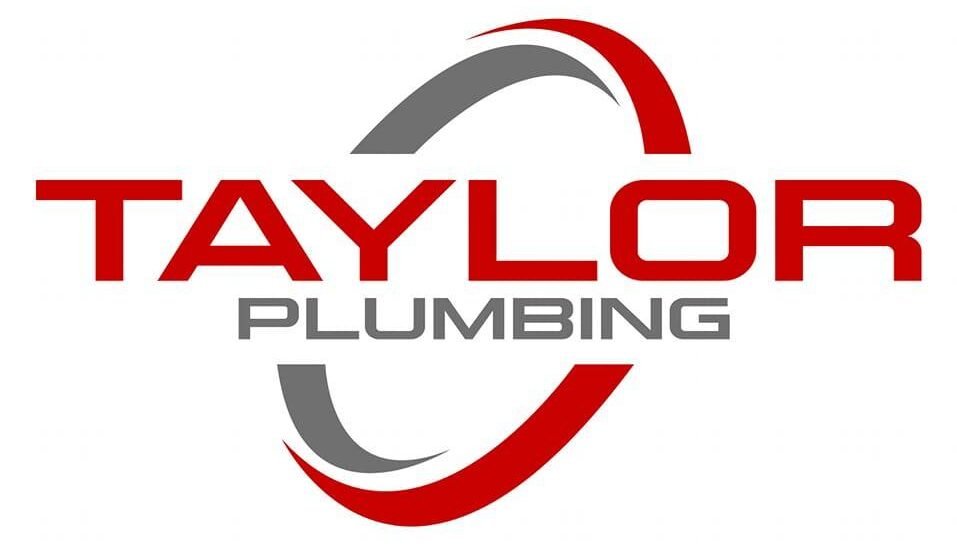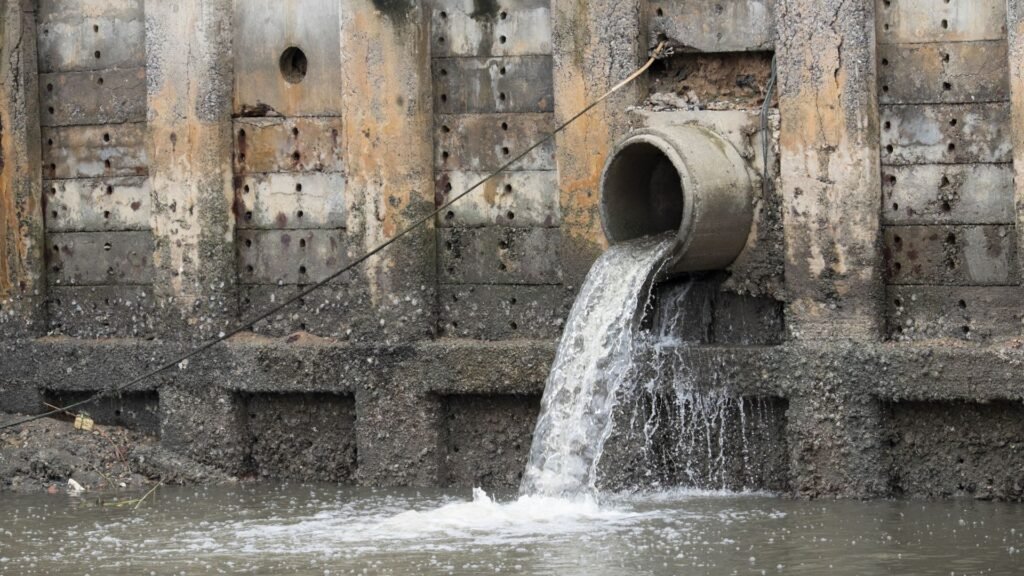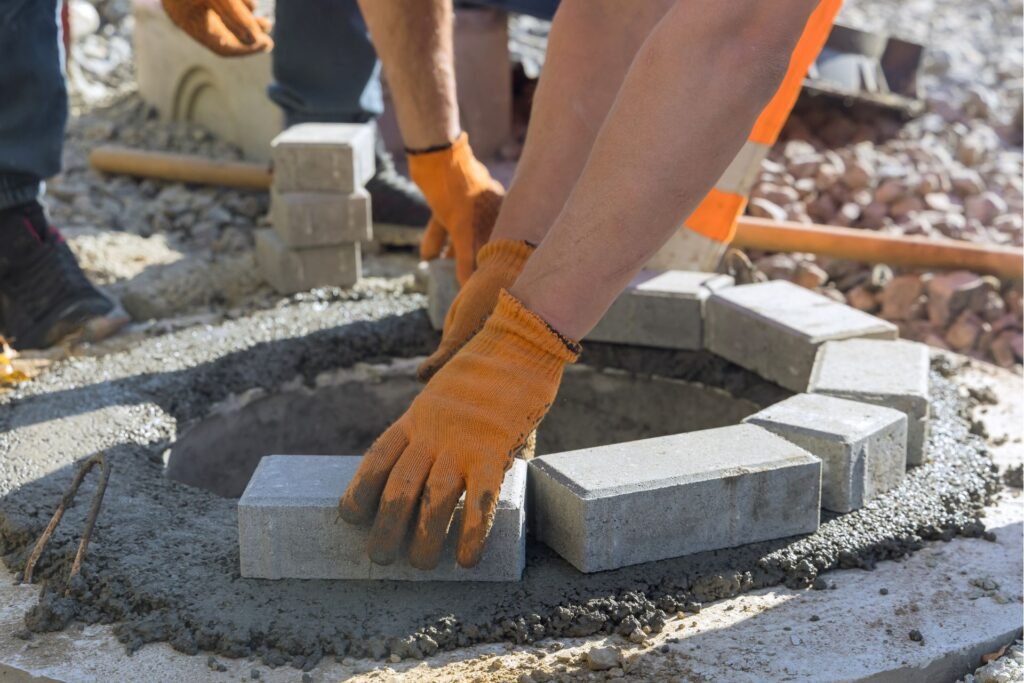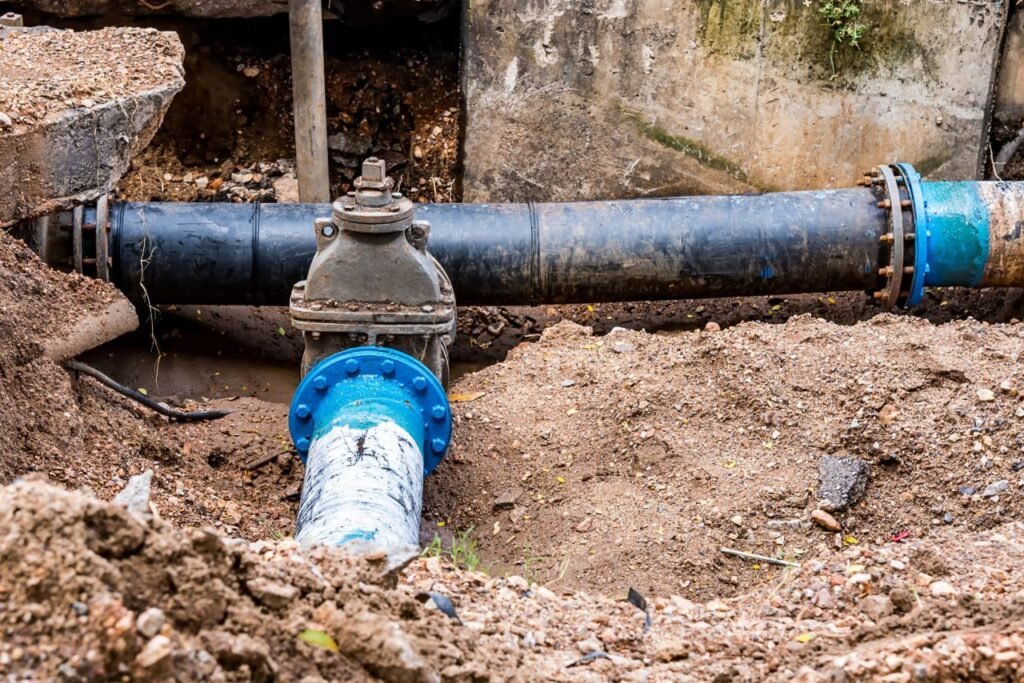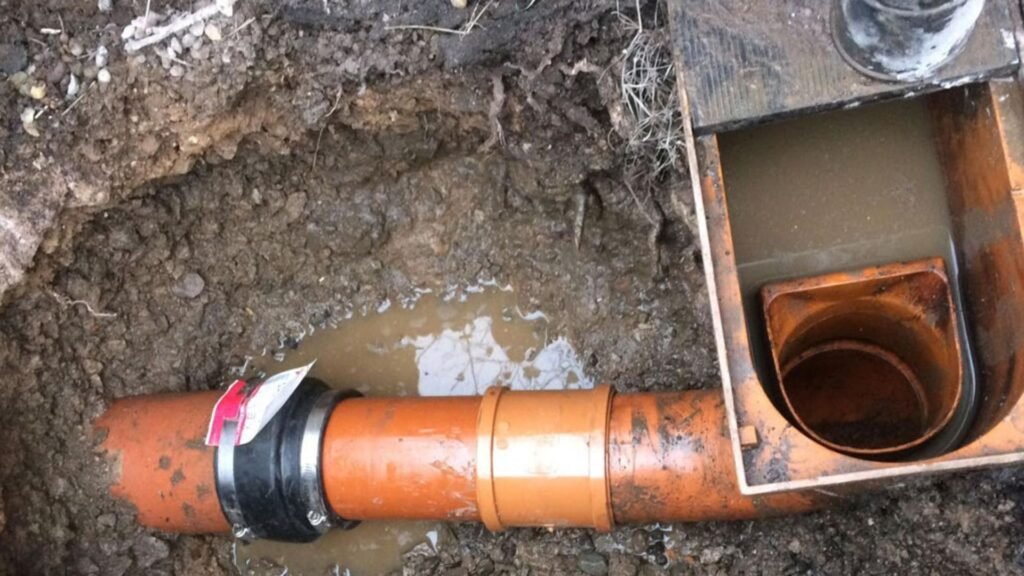Welcome to our comprehensive guide on stormwater drainage in New Zealand! Whether you’re a homeowner, business owner, or simply curious about how rainwater is managed in your community, understanding stormwater drainage is essential for protecting your property and preserving the environment. In this article, we’ll take a deep dive into what stormwater is, how drainage systems work, and why effective management is crucial, especially with New Zealand’s unpredictable weather patterns. From preventing flooding to reducing pollution in our waterways, stormwater drainage plays a vital role in keeping our cities and homes safe. Let’s explore how you can contribute to better water management and ensure your property stays dry during those heavy downpours.
Stormwater drainage in New Zealand refers to the systems designed to manage rainwater runoff from streets, roofs, and other surfaces. These systems help prevent flooding, reduce pollution in waterways, and protect infrastructure by directing excess water away from properties and into natural watercourses or treatment facilities. Effective stormwater drainage is essential in NZ due to the country’s frequent heavy rainfall and urban development, which increase runoff. Homeowners can contribute by maintaining gutters, using permeable surfaces, and reporting blockages to local councils.
- What Is Stormwater?
- The Importance Of Stormwater Drainage Systems In NZ
- How Does Stormwater Drainage Work?
- Common Stormwater Drainage Issues In NZ
- Solutions For Stormwater Management At Home
- NZ’s Regulations And Guidelines On Stormwater Management
- The Future Of Stormwater Management In New Zealand
- Case Studies: Successful Stormwater Management Projects In NZ
- What You Can Do To Help
- FAQs: About Stormwater Drainage NZ
- What is stormwater drainage?
- Why is stormwater drainage important in New Zealand?
- How does stormwater drainage work?
- What are common stormwater drainage issues in New Zealand?
- What can I do as a homeowner to improve stormwater drainage?
- What is the role of local councils in stormwater management?
- How does climate change affect stormwater drainage?
- What are some sustainable stormwater management solutions?
- Are there regulations around stormwater management in New Zealand?
- What should I do if I notice a blocked drain or flooding in my area?
- Conclusion
What Is Stormwater?
Stormwater refers to the water from rainfall or snowmelt that does not get absorbed into the ground but instead runs off various surfaces like streets, rooftops, driveways, and other man-made structures. In its journey from these surfaces to larger bodies of water, stormwater often picks up pollutants, debris, and harmful chemicals that can negatively impact the environment and human health.
Natural vs. Man-Made Surfaces: How Stormwater Acts
In natural settings, such as forests, fields, or undeveloped land, rainwater is mostly absorbed by the soil. This process allows for water filtration, as impurities are naturally broken down by the earth. The absorption also helps recharge groundwater supplies, keeping ecosystems in balance.
However, in urban and developed areas, hard, impervious surfaces like concrete, asphalt, and roofs prevent water from being absorbed into the ground. Instead, stormwater becomes runoff, flowing rapidly into storm drains, sewers, and nearby water bodies. This quick runoff not only leads to water pollution but can also cause significant environmental and structural problems.
Why Managing Stormwater is Crucial
Effective stormwater management is essential for several reasons:
1. Flood Prevention: When large volumes of stormwater accumulate quickly due to heavy rainfall or snowmelt, it can overwhelm drainage systems and lead to urban flooding. This can result in extensive property damage, unsafe living conditions, and costly repairs to infrastructure.
2. Water Pollution: Stormwater often carries pollutants like oil, pesticides, fertilizers, and other chemicals picked up from roads, lawns, and industrial sites. When this contaminated water flows untreated into rivers, lakes, or oceans, it can degrade water quality, harming aquatic life and potentially impacting human health.
3. Infrastructure Damage: Over time, unmanaged stormwater can erode soils, weaken foundations, and damage roads, bridges, and other infrastructure. This not only poses safety risks but also leads to increased maintenance costs for municipalities.
In summary, stormwater might seem like a natural consequence of rainfall, but without proper management, it can cause significant environmental, economic, and health issues. This is why strategies like green infrastructure, permeable surfaces, and stormwater retention systems are becoming increasingly vital in urban planning. Managing stormwater isn’t just about controlling water; it’s about protecting communities, ecosystems, and our future.

The Importance Of Stormwater Drainage Systems In NZ
Stormwater drainage systems play a critical role in maintaining the environmental health, infrastructure integrity, and safety of New Zealand’s urban and rural areas. With the country’s unique landscape, frequent rainfall, and proximity to water bodies, effective stormwater management is not just a necessity but a vital element for preserving the nation’s natural beauty and protecting communities.
Environmental Impact
Unmanaged stormwater can have severe repercussions on New Zealand’s diverse ecosystems. When rainwater runs off hard surfaces like roads, rooftops, and driveways, it collects various pollutants—such as oil, chemicals, litter, and sediments—that eventually flow into lakes, rivers, and oceans. Without proper drainage systems, this polluted water contaminates natural water sources, threatening both aquatic life and the overall health of ecosystems.
New Zealand’s environment is renowned for its pristine rivers, lush wetlands, and stunning coastal areas. Effective stormwater systems are designed to channel runoff safely, often incorporating treatment methods that filter out contaminants before they reach natural waterways. By preventing pollution at the source, these systems help to protect New Zealand’s iconic wildlife, including native fish species like the longfin eel, and ensure that future generations can continue to enjoy clean, unspoiled environments.
Flood Prevention
In a country that experiences frequent and sometimes heavy rainfall, stormwater systems are essential for mitigating flood risks, especially in densely populated urban areas. Without these systems, excess water from rainfall can quickly overwhelm streets and neighborhoods, leading to dangerous flooding. This is particularly important in regions like Auckland and Wellington, which receive significant rainfall annually.
For instance, Auckland can experience annual rainfall totals of up to 1,200 mm, while Wellington often surpasses 1,100 mm. These high precipitation levels, combined with urbanization, increase the risk of stormwater buildup if proper drainage isn’t in place. With increasing climate variability, certain regions are becoming even more prone to sudden downpours, heightening the need for resilient and well-maintained stormwater infrastructure.
By efficiently directing stormwater away from vulnerable areas, these systems significantly reduce the likelihood of flood events. This is crucial not only for human safety but also for minimizing damage to properties and public infrastructure.
Infrastructure Protection
In addition to environmental and flood management, stormwater drainage systems are vital for safeguarding New Zealand’s infrastructure. Roads, bridges, homes, and businesses are all at risk of damage from uncontrolled water flow. Persistent water accumulation can erode foundations, degrade road surfaces, and weaken the structural integrity of buildings and bridges.
For example, excessive water can seep into roads and cause potholes or cracking, while bridges may suffer from scouring, which is the erosion of soil around their foundations. In the long term, this type of damage can lead to costly repairs and, in extreme cases, infrastructure failure.
Effective stormwater drainage protects against these issues by efficiently diverting water away from sensitive areas. Well-maintained drainage networks ensure that roads remain safe to drive on, homes remain structurally sound, and public infrastructure like bridges and tunnels stay functional for longer periods. This not only saves on costly repairs but also helps to ensure that New Zealand’s transport and utility networks continue to operate smoothly, even during heavy rain events.
In summary, stormwater drainage systems in New Zealand are essential for protecting the environment, preventing floods, and safeguarding infrastructure. With the increasing variability in weather patterns and the growing challenges of urbanization, investing in and maintaining these systems is critical for the country’s future sustainability and resilience.

How Does Stormwater Drainage Work?
A stormwater drainage system plays a critical role in managing rainwater and preventing floods, especially during heavy rainfall. Let’s break down how this essential system works and explore its key components.
Components of a Stormwater Drainage System
A stormwater drainage system is made up of several interconnected parts, each playing a unique role in collecting, transporting, and managing water runoff. Understanding these elements helps illustrate how they work together to protect homes, properties, and the environment.
1. Gutters and Downpipes
These are the first line of defense in a stormwater drainage system, primarily installed on rooftops. Gutters collect rainwater that falls onto roofs and direct it into downpipes. The downpipes then channel this water from the roof to the ground level, where it can be further managed. Without functioning gutters and downpipes, water can pool on rooftops, leading to leaks, structural damage, or flooding near the foundation of a building.
2. Catch Basins and Grates
Catch basins, often covered by metal grates, are designed to capture surface water, such as rainwater flowing over roads, driveways, or sidewalks. These basins are strategically placed in areas prone to collecting runoff, preventing water from accumulating on the surface. Once the water flows into these catch basins, it is funneled into underground pipes for safe transport away from the area. The grates also serve to filter out debris like leaves and litter, helping to reduce blockages in the drainage system.
3. Pipes and Drains
Beneath the surface, a network of pipes and drains works to carry water away from streets, parking lots, and properties. This underground system directs stormwater from catch basins and downpipes to larger drainage outlets or natural water bodies like rivers, lakes, or oceans. These pipes are critical in preventing urban flooding by keeping the water flowing and reducing surface runoff. Regular maintenance is essential to keep this underground system functional and free of clogs.
4. Retention and Detention Ponds
- Retention and detention ponds are designed to handle large volumes of stormwater, especially in newer housing developments, commercial areas, and parks.
- Retention ponds are permanent features that hold water year-round. They allow excess stormwater to be stored and gradually absorbed into the ground or released into natural waterways.
- Detention ponds, on the other hand, are temporary basins that fill with water during a storm and slowly release it after the rain stops. These ponds help manage surges in water flow, preventing downstream flooding and erosion.
The Role of Gravity in Stormwater Systems
Stormwater drainage systems largely depend on gravity to move water from higher to lower elevations. The design of the system ensures that water flows naturally downhill, away from homes, streets, and other structures. This slope-based approach is essential for minimizing the risk of standing water, which can lead to flooding or water damage. By utilizing gravity, stormwater systems reduce the need for pumps and other mechanical equipment, making them more efficient and reliable in the long run.
Public vs. Private Responsibility
When it comes to maintaining stormwater drainage systems, there is a clear distinction between public and private responsibility.
- Public Responsibility: Local councils or municipalities typically manage the stormwater infrastructure in public areas, such as streets, parks, and commercial districts. This includes maintaining catch basins, public drains, and the larger network of pipes that channel water into natural bodies or treatment facilities. Local governments may also oversee the development of retention or detention ponds to manage stormwater in growing communities.
- Private Responsibility: Homeowners are responsible for the stormwater management on their own property. This includes maintaining gutters, downpipes, and any private drains connected to the public system. If a property has its own catch basin or detention pond, the owner must also ensure these features are kept clean and functional. Failing to do so can result in water damage to the property and may lead to fines or other penalties if the runoff causes issues in public spaces.
By clearly understanding how stormwater drainage works and recognizing the respective responsibilities of public and private entities, both municipalities and homeowners can take the necessary steps to protect their properties and communities from water-related damage.

Common Stormwater Drainage Issues In NZ
New Zealand’s stormwater drainage systems are essential for managing rainwater and preventing flooding, but they often face significant challenges. These challenges are amplified by both natural events and human activities, making stormwater management a critical issue. Here’s an in-depth look at some of the most common stormwater drainage issues in New Zealand:
Blocked Drains
Blocked drains are one of the leading causes of flooding and water buildup during heavy rainfall. These blockages often result from the accumulation of leaves, debris, or litter that can clog the drainage system. Particularly in the fall and winter months, when trees shed their leaves, or after significant storms, drains can quickly become overwhelmed.
New Zealand has experienced numerous incidents where poor drainage has exacerbated flooding. For instance, recent heavy rains in parts of Auckland and Wellington have led to widespread flooding due to blocked or poorly maintained drains. This highlights the importance of regular maintenance and public awareness around keeping drainage systems clear.
Aging Infrastructure
Another challenge that contributes to stormwater drainage problems is aging infrastructure. Some of New Zealand’s older cities, such as parts of Auckland and Christchurch, rely on drainage systems that were installed decades ago. As these systems age, they become less efficient at handling increased water volumes, especially during heavy rainfall events.
In some cases, these older systems were not designed to cope with the rapid urban development that has occurred over the years, leading to problems like overflow and system failures. Upgrading this aging infrastructure is essential to preventing drainage issues in the future, but it’s a costly and complex task that many local councils are grappling with.
Extreme Weather
New Zealand is no stranger to extreme weather events, and climate change is only making these events more frequent and intense. Heavier rainfall, strong storms, and even unpredictable weather patterns are putting immense pressure on the country’s stormwater drainage systems.
As these weather events increase in severity, existing drainage systems struggle to cope with the sudden influx of water. Recent flooding events across the country are clear indicators that New Zealand’s stormwater infrastructure needs to be resilient to the challenges posed by climate change. Failure to address these issues will only lead to more frequent and severe flooding, particularly in urban areas.
Urbanization
Urbanization is a major contributor to stormwater drainage problems in New Zealand. With more urban development comes an increase in hard surfaces like roads, pavements, and buildings. These surfaces do not absorb water like natural landscapes, leading to increased runoff during rainstorms.
As urban areas expand, the natural ability of the land to manage and absorb stormwater diminishes, causing additional strain on existing drainage systems. Cities like Auckland and Wellington, which have seen rapid urban growth, are particularly vulnerable to these issues. More runoff means more water flowing into storm drains, which can quickly overwhelm the system, leading to localized flooding.
New Zealand faces a variety of stormwater drainage challenges, from blocked drains and aging infrastructure to the pressures of extreme weather and rapid urbanization. Addressing these issues will require a combination of infrastructure upgrades, better urban planning, and public education on keeping drains clear. Without action, the country will continue to face severe flooding and other stormwater-related problems, particularly as climate change accelerates and urban areas continue to grow.

Solutions For Stormwater Management At Home
Managing stormwater effectively at home is crucial not only for protecting your property but also for contributing to a sustainable environment. When stormwater isn’t properly managed, it can lead to flooding, erosion, and water pollution. By implementing practical solutions, homeowners can mitigate these risks while improving their landscape and supporting local ecosystems.
Homeowner Maintenance Tips
There are several simple yet effective ways homeowners can take action to manage stormwater runoff and reduce the potential for damage:
1. Clear Gutters and Drains
One of the easiest and most essential steps in stormwater management is keeping gutters and drains clear. Over time, debris like leaves, twigs, and dirt can accumulate in your gutters, causing blockages. When gutters are clogged, water can overflow and pool around your home’s foundation, leading to structural damage and basement flooding.
Regular gutter maintenance—especially before the rainy season—ensures proper water flow away from your house. It’s a good idea to clean gutters at least twice a year, or more frequently if you live in an area with a lot of trees. Don’t forget to check downspouts to make sure they are clear and direct water away from your home effectively.
2. Ensure Proper Grading Around Your Home
The grading of your landscape plays a significant role in how stormwater is managed. Proper grading means the ground slopes away from your house, directing water away from your foundation and reducing the risk of flooding or water seepage.
If water pools near your foundation, you might need to regrade the land around your home. This can often be accomplished by adding soil and reshaping the ground so that it slopes gently away from the building. A slope of about 5% (approximately 6 inches over 10 feet) is recommended for effective drainage.
3. Install Rain Gardens or Swales
Rain gardens and swales are natural solutions for stormwater management that can significantly reduce runoff and help water soak into the ground. A rain garden is a shallow, planted depression in your yard that captures and absorbs rainwater from roofs, driveways, or patios. It’s filled with native plants that thrive in wet conditions and promote water infiltration.
Swales, on the other hand, are shallow, vegetated channels designed to slow down and capture stormwater. Like rain gardens, they allow water to filter back into the soil, reducing runoff and preventing erosion.
These landscaping features not only help with stormwater management but also add aesthetic value to your yard and support local wildlife, particularly pollinators like bees and butterflies.
4. Use Permeable Paving
Traditional paving materials like concrete and asphalt prevent water from seeping into the ground, causing runoff to accumulate and flow into storm drains. This can overwhelm drainage systems and lead to localized flooding. A sustainable alternative is permeable paving, which allows water to pass through and infiltrate the soil.
Permeable paving materials include porous concrete, gravel, permeable pavers, and open-grid systems. By using these materials for driveways, walkways, and patios, homeowners can reduce the amount of stormwater runoff from their property and help replenish groundwater supplies.
Council-Provided Solutions
In addition to taking action at home, it’s important for homeowners to stay informed about local council stormwater management initiatives. Many councils offer resources such as stormwater grants, rain barrel programs, and educational workshops on sustainable landscaping practices.
Furthermore, if you notice any issues with stormwater drainage in your neighborhood—such as blocked storm drains, flooding, or erosion—it’s important to report them to your local council. Prompt reporting can help the council address problems before they become more severe and impact the wider community.
By working hand-in-hand with your local government and implementing simple stormwater management solutions at home, you can protect your property from water damage while contributing to the health and sustainability of your environment.
By following these homeowner tips and staying proactive about stormwater management, you can safeguard your home while making a positive environmental impact. These strategies also align with modern landscaping trends, ensuring that your property remains not only protected but also aesthetically pleasing.
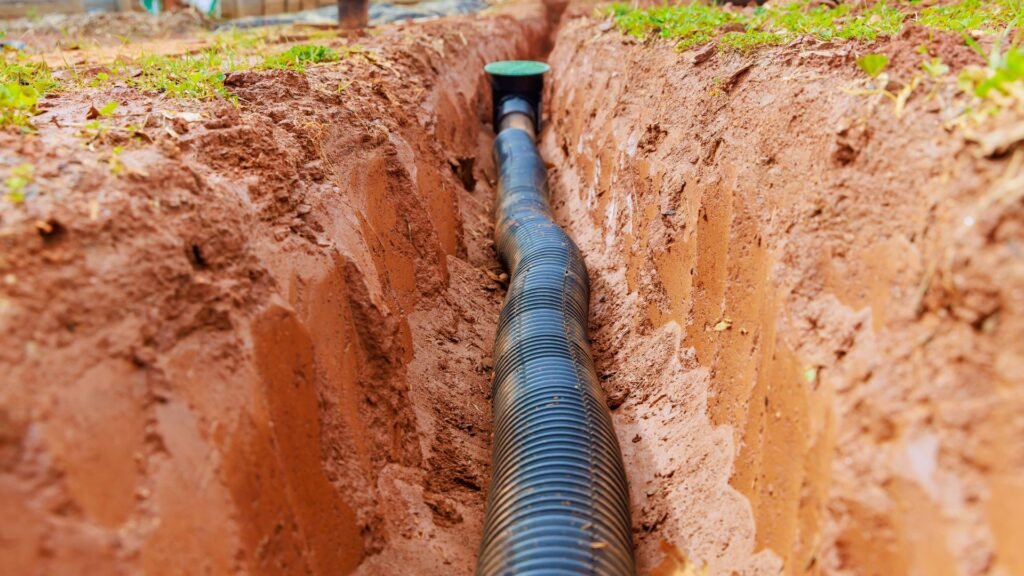
NZ’s Regulations And Guidelines On Stormwater Management
New Zealand’s stormwater management is a critical aspect of maintaining environmental health and urban infrastructure. Properly managing stormwater helps prevent flooding, protects water quality, and ensures sustainable development. In this section, we will explore New Zealand’s national policies, local council responsibilities, and the building codes that govern stormwater management in the country.
National Policies
New Zealand’s approach to stormwater management is framed by a combination of National Environmental Standards (NES) and broader water management policies under the Resource Management Act (RMA) 1991. The RMA lays the foundation for protecting the environment by regulating how water resources, including stormwater, are managed at both the national and local levels. National policies emphasize the importance of minimizing the adverse effects of stormwater runoff, particularly to prevent contamination of waterways, erosion, and other environmental degradation.
One of the key pieces of legislation is the National Policy Statement for Freshwater Management (NPS-FM), which outlines objectives and policies aimed at improving the quality of freshwater resources. Stormwater management plays a significant role in achieving these objectives, as untreated stormwater can carry pollutants into rivers, lakes, and coastal areas. This policy encourages the implementation of Low Impact Design (LID) practices to manage stormwater in a way that mimics natural hydrological processes, such as infiltration and evaporation, rather than simply channeling water away from urban areas.
Local Council Responsibilities
In New Zealand, local councils are tasked with managing stormwater systems to protect communities and the environment. Each council has specific responsibilities for stormwater infrastructure and water quality management. Here’s how three of New Zealand’s largest cities approach stormwater management:
- Auckland: The Auckland Council oversees the city’s stormwater network through its “Healthy Waters” department. Auckland faces significant challenges with stormwater due to its rapid urban growth and unique geography, which includes extensive coastlines and volcanic terrain. To mitigate these challenges, the council has introduced the Auckland Stormwater Management Plan and runs initiatives such as the Water Sensitive Design (WSD) framework, which promotes sustainable stormwater management practices in new developments.
- Wellington: Wellington City Council faces the challenge of managing stormwater in a hilly, compact city that often experiences heavy rainfall. Wellington’s Te Awa Kairangi/Hutt River Stormwater Project is an example of a local initiative aimed at improving stormwater systems and protecting waterways from pollution. The council is also working on improving flood resilience, given the city’s vulnerability to climate change-related weather events.
- Christchurch: In Christchurch, the Christchurch City Council manages stormwater systems with a focus on the region’s unique post-earthquake landscape. The council has implemented initiatives like the Christchurch Waterways Rehabilitation Program, which integrates stormwater management with ecological restoration. The program aims to treat stormwater at the source and restore the natural functionality of waterways affected by urban development.
Each of these councils also engages with the public through education campaigns and community involvement, such as Auckland’s “Love Our Water” campaign, which encourages residents to adopt stormwater-friendly practices like using rain gardens, permeable paving, and minimizing pollutants entering storm drains.
Building Codes
Property developers and homeowners in New Zealand must comply with strict building codes and regulations to ensure proper stormwater management when building or renovating. The New Zealand Building Code (Clause E1: Surface Water) specifies requirements for managing stormwater on building sites to avoid flooding and structural damage. It mandates that stormwater must be collected and safely discharged without compromising the surrounding environment or neighboring properties.
For those developing new properties or renovating existing ones, it’s crucial to work with qualified professionals who are familiar with local council stormwater regulations. Failure to comply with these regulations can lead to costly delays or fines. Common compliance measures include the installation of on-site stormwater detention systems, permeable surfaces, and rainwater harvesting systems. Developers are also encouraged to integrate green infrastructure, such as vegetated swales and rain gardens, to manage stormwater sustainably.
Moreover, developers must ensure that their stormwater management systems align with both local council guidelines and broader national policies. Auckland, for example, has its own Auckland Unitary Plan that outlines specific stormwater management requirements for new developments, promoting sustainable practices like Water Sensitive Urban Design (WSUD).
New Zealand’s stormwater management regulations and guidelines are designed to protect both urban infrastructure and the natural environment. National policies like the Resource Management Act and the National Policy Statement for Freshwater Management guide local councils in developing robust stormwater systems, while individual property developers and homeowners must adhere to specific building codes to ensure compliance. By working together, New Zealand can continue to develop while preserving its vital water resources and mitigating the impacts of stormwater runoff on the environment.
Whether you’re a homeowner, developer, or simply a concerned citizen, staying informed about stormwater management policies and practices is essential to contributing to a sustainable future for New Zealand’s communities and ecosystems.
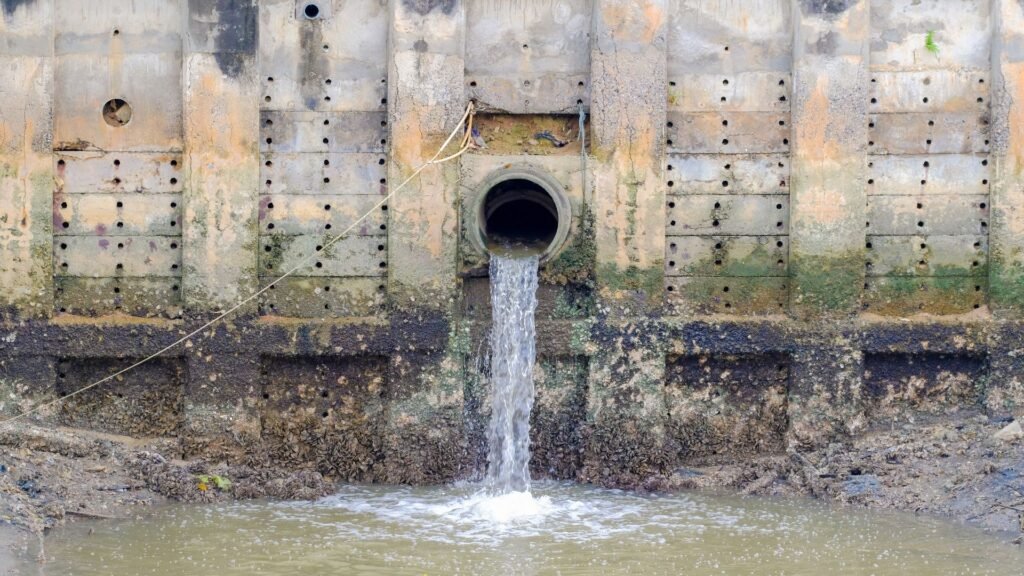
The Future Of Stormwater Management In New Zealand
Stormwater management in New Zealand is evolving rapidly as cities and communities recognize the need for sustainable and innovative solutions to address the environmental and infrastructural challenges posed by urban growth and climate change. As flooding and water quality issues become more prevalent, the focus is shifting toward smarter, greener, and community-driven approaches that can handle both the volume and quality of stormwater runoff. Let’s explore the key trends shaping the future of stormwater management in New Zealand.
Green Infrastructure: Nature-Based Solutions for Stormwater Management
Green infrastructure is at the heart of New Zealand’s future stormwater management strategy. Cities are increasingly looking to nature-based solutions to manage runoff more effectively while improving urban environments. Some of the key green infrastructure methods being implemented include:
- Rain Gardens: These are shallow, landscaped depressions that use native plants to filter stormwater and allow it to seep into the ground, rather than flowing directly into stormwater systems. Rain gardens help reduce runoff and improve water quality by capturing pollutants.
- Permeable Surfaces: Traditional impermeable surfaces like concrete and asphalt prevent water from soaking into the ground. However, cities are beginning to replace these with permeable paving materials that allow rainwater to filter through, reducing surface runoff and lowering the risk of flooding.
- Vegetated Swales: These shallow, vegetated channels are designed to slow down stormwater flow, allowing it to infiltrate into the ground while filtering out pollutants. Swales are being incorporated into parks, streets, and open spaces, enhancing both stormwater management and urban aesthetics.
By embracing green infrastructure, New Zealand’s urban areas are not only mitigating stormwater issues but also enhancing biodiversity, improving air quality, and creating more attractive, livable spaces for their communities.
Technology and Innovation: Smart Solutions for Stormwater Challenges
In addition to green infrastructure, New Zealand is beginning to adopt cutting-edge technologies to manage stormwater more effectively. These technological advancements are transforming how cities predict, monitor, and respond to stormwater-related challenges. Some of the innovations being trialed include:
- Smart Drainage Systems: These systems use sensors and real-time data to monitor water levels, predict flooding risks, and manage stormwater flow in a more dynamic way. Smart drainage systems allow cities to respond to potential problems before they escalate, reducing the risk of infrastructure damage and improving public safety.
- Water Quality Monitoring Tools: New technologies are enabling continuous monitoring of water quality in stormwater systems. By tracking pollutants and contaminants in real-time, city planners can make data-driven decisions to improve stormwater treatment and ensure compliance with environmental standards.
- Stormwater Harvesting and Reuse: Innovative systems are being developed to capture and store stormwater for reuse in irrigation, toilet flushing, and other non-potable applications. This not only reduces the demand on freshwater resources but also helps lower the volume of stormwater entering drainage systems during heavy rainfall events.
These technologies are still in their early stages in New Zealand, but as they become more widespread, they have the potential to revolutionize the way cities manage stormwater and protect their infrastructure from the impacts of climate change.
The Role of Communities: Collective Action for a Sustainable Future
While governments and city planners are responsible for implementing large-scale stormwater solutions, communities play a vital role in ensuring these efforts succeed. Community involvement in stormwater management can significantly reduce pollution, enhance public awareness, and promote sustainable water use. Here are some ways individuals and communities are contributing to better stormwater management:
- Community Clean-Up Events: Organizing local clean-up events to remove litter, debris, and other pollutants from streets, gutters, and drains helps prevent blockages in stormwater systems. This simple action reduces the risk of flooding and improves water quality downstream.
- Rainwater Harvesting: Installing rain barrels or tanks at homes and businesses allows individuals to capture and reuse rainwater, reducing the volume of stormwater runoff. This practice not only conserves water but also helps alleviate pressure on local stormwater systems during heavy rains.
- Adopting Low-Impact Practices: Homeowners can implement low-impact landscaping practices, such as using native plants, reducing paved areas, and installing permeable surfaces in their gardens and driveways. These measures reduce runoff, enhance natural infiltration, and support local ecosystems.
By engaging communities and encouraging collective action, New Zealand can create a more resilient and sustainable stormwater management system. Individuals have the power to make a significant impact through small but meaningful actions that contribute to a healthier environment for future generations.
The future of stormwater management in New Zealand is centered around a balance of nature-based solutions, technological innovation, and active community participation. As cities continue to grow and the impacts of climate change become more severe, it is critical that New Zealand embraces green infrastructure and cutting-edge technology while fostering a culture of environmental stewardship within its communities. Together, these efforts will help safeguard New Zealand’s waterways, reduce the risks associated with flooding, and ensure a more sustainable future for all.

Case Studies: Successful Stormwater Management Projects In NZ
New Zealand has faced numerous stormwater management challenges due to its varied climate, urbanization, and natural events. However, several cities have risen to the occasion, implementing innovative and sustainable projects that not only mitigate flooding but also enhance urban environments. Below are three significant case studies demonstrating the success of stormwater management efforts in New Zealand.
Auckland’s Central Interceptor Project
Auckland’s Central Interceptor Project is one of the most ambitious stormwater and wastewater initiatives in New Zealand. This large-scale project aims to significantly reduce water overflows and flooding within Auckland, particularly during heavy rainfall events.
The Central Interceptor is essentially a giant underground tunnel—13 kilometers long and up to 4.5 meters in diameter—that will collect and transfer both stormwater and wastewater from the city’s urban areas to a treatment facility. One of its primary goals is to prevent combined sewer overflows, where stormwater and wastewater mix, causing pollution in Auckland’s waterways and beaches.
Upon completion, this project is expected to reduce these overflows by up to 80%, improving the quality of water in local rivers and harbors. It will also help mitigate urban flooding, making Auckland more resilient to extreme weather events driven by climate change. The Central Interceptor is a long-term investment in the city’s future, supporting population growth while ensuring environmental protection.
Wellington’s Green Infrastructure Plan
In Wellington, green infrastructure has become a core component of urban planning, helping the city manage stormwater in a sustainable way. The Green Infrastructure Plan focuses on integrating nature-based solutions, such as green roofs, rain gardens, and water-sensitive urban designs (WSUD), into the urban fabric.
Green roofs are particularly effective in reducing stormwater runoff. These vegetated rooftops absorb rainwater, slowing its flow into the drainage system and reducing the risk of flooding. Similarly, rain gardens, which are planted depressions that capture and filter stormwater, have been widely adopted across Wellington. These gardens not only manage water flow but also enhance biodiversity and improve the aesthetics of the city.
Water-sensitive urban designs further emphasize the importance of designing buildings and infrastructure that work with, rather than against, natural water flows. These designs focus on capturing, using, and filtering stormwater close to where it falls, reducing the need for extensive piping and drainage systems. By implementing these green infrastructure solutions, Wellington is not only managing its stormwater more effectively but also creating healthier, more livable urban spaces.
Christchurch’s Post-Earthquake Water Management
The 2011 earthquake in Christchurch not only devastated much of the city’s infrastructure but also disrupted its natural water flows. In response, Christchurch undertook a comprehensive restructuring of its stormwater and drainage systems to ensure the city would be better equipped to handle future water challenges.
One of the most significant changes was the redesign of the city’s drainage system to be more adaptable and resilient. Christchurch introduced new detention basins, wetlands, and biofiltration systems that slow down water flow during heavy rain, reducing the risk of flooding. These natural systems also improve water quality by filtering out pollutants before the stormwater enters rivers or the ocean.
The post-earthquake water management plan also included the creation of open water channels and green spaces designed to absorb and control excess water. This not only helped prevent flooding but also revitalized areas of the city, turning them into public amenities that improve quality of life for residents.
By integrating these water management systems into the urban landscape, Christchurch has transformed its post-earthquake recovery into an opportunity for sustainable urban renewal. The city’s innovative approach serves as a model for other regions facing similar challenges.
These case studies highlight how different cities in New Zealand are employing a range of stormwater management strategies, from large-scale infrastructure projects to green, nature-based solutions. Each initiative reflects a commitment to sustainability, resilience, and the long-term health of the urban environment. By addressing stormwater challenges head-on, these projects are not only protecting communities from flooding but also ensuring cleaner waterways, improved public spaces, and greater resilience to climate change.

What You Can Do To Help
Taking small, proactive steps in your local community can make a big difference in managing stormwater and reducing the risk of flooding. By being aware of drainage in your area, reporting problems to local authorities, and supporting community initiatives, you can help maintain a healthy environment and protect your neighborhood from potential water-related issues. Here’s how:
1. Be Aware of Drainage in Your Area
Stormwater drainage systems are crucial for keeping our streets and properties free from flooding. However, many people often overlook the condition of storm drains near their homes or workplaces.
Pay attention to stormwater drains on your street, especially during heavy rain. Are they clogged with leaves, litter, or other debris? A blocked drain can cause water to back up, leading to localized flooding, water damage to property, and even hazardous conditions on the roads.
By staying vigilant and ensuring drains are clear, you can prevent many drainage issues before they start. Simple actions like sweeping up leaves or picking up trash near drains can go a long way toward keeping water flowing smoothly.
2. Report Problems to Your Local Council
When it comes to larger drainage issues, such as blocked drains, street flooding, or damaged stormwater infrastructure, don’t hesitate to report them to your local council. Many municipalities have hotlines or online forms where you can easily submit reports.
By acting quickly when you spot a problem, you’re helping local authorities address it before it worsens, potentially preventing costly damage to public property or your neighborhood. Prompt reporting ensures that stormwater systems are maintained regularly and effectively.
Encouraging your neighbors and others in your community to report problems as soon as they arise also fosters a collective responsibility for the environment. The more eyes on potential issues, the faster they can be resolved.
3. Support Local Initiatives
Many communities have programs aimed at improving stormwater management, and getting involved in these efforts is a great way to contribute. Local initiatives might include tree planting, which can reduce runoff by absorbing rainwater, or creating more permeable surfaces in the neighborhood, such as installing rain gardens or permeable pavements.
Supporting these projects not only helps manage stormwater more effectively but also enhances the beauty of your local area. Trees and gardens can provide additional benefits, such as improved air quality, more green spaces for recreation, and even increased property values.
Check if your community has volunteer opportunities for such projects or advocate for local policies that prioritize sustainable drainage solutions. By working together with others, you can help ensure a more resilient and environmentally-friendly neighborhood for years to come.
Taking action in your local community doesn’t have to be overwhelming. By staying mindful of the drainage in your area, reporting issues to local authorities, and supporting community initiatives, you can make a significant impact on stormwater management. These small steps contribute to a cleaner, safer environment for everyone.
If we all do our part, we can prevent flooding, protect property, and support the health of our local ecosystems. Start today by being aware, getting involved, and spreading the word about the importance of stormwater drainage in your community.
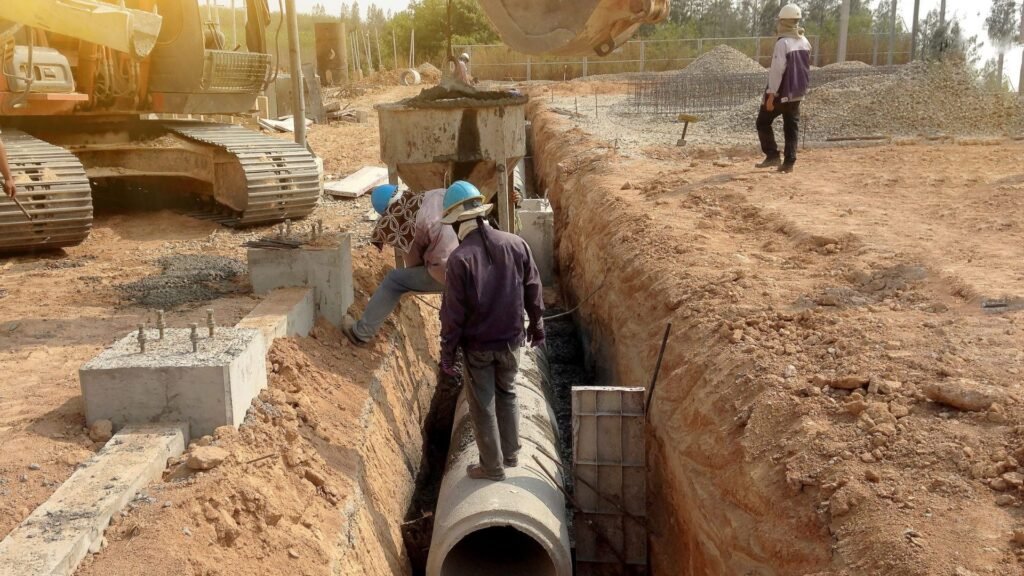
FAQs: About Stormwater Drainage NZ
What is stormwater drainage?
Stormwater drainage is the system used to manage rainwater runoff from surfaces like streets, roofs, and driveways. It directs excess water away from urban areas and into natural water bodies or treatment facilities, preventing flooding and environmental damage.
Why is stormwater drainage important in New Zealand?
New Zealand experiences frequent heavy rainfall, which can lead to flooding if stormwater is not properly managed. Effective drainage prevents water from pooling in urban areas, reduces pollution in waterways, and protects homes, businesses, and infrastructure from water damage.
How does stormwater drainage work?
Stormwater drainage systems include gutters, catch basins, pipes, and retention ponds that collect and direct rainwater away from buildings and streets. These systems rely on gravity to move water downhill and away from areas where it could cause harm, ultimately directing it to larger bodies of water or treatment facilities.
What are common stormwater drainage issues in New Zealand?
Common issues include blocked drains caused by debris like leaves or litter, aging infrastructure that can’t handle modern rainfall volumes, and the impact of urbanization, which increases runoff due to more hard surfaces like concrete.
What can I do as a homeowner to improve stormwater drainage?
Homeowners can maintain gutters and drains by cleaning them regularly, ensure proper grading around the house to divert water away, install rain gardens or permeable paving, and report any drainage issues to their local council.
What is the role of local councils in stormwater management?
Local councils in New Zealand are responsible for managing public stormwater drainage systems, including the maintenance of drains, catch basins, and public stormwater infrastructure. They also develop and enforce regulations related to stormwater management for new developments.
How does climate change affect stormwater drainage?
Climate change is leading to more frequent and intense rainfall in New Zealand, which can overwhelm existing stormwater drainage systems. As a result, there is an increased risk of flooding and water contamination if drainage systems are not upgraded or properly maintained.
What are some sustainable stormwater management solutions?
Sustainable solutions include the use of rain gardens, permeable pavements, and green roofs, which help absorb stormwater into the ground rather than allowing it to runoff. These methods help reduce the load on stormwater systems and mitigate flooding.
Are there regulations around stormwater management in New Zealand?
Yes, there are national environmental standards and local regulations in place to ensure proper stormwater management. These guidelines cover everything from the design of stormwater systems in new developments to the responsibilities of property owners and local councils in managing stormwater runoff.
What should I do if I notice a blocked drain or flooding in my area?
If you notice a blocked drain or localized flooding, you should report it to your local council as soon as possible. Councils are responsible for maintaining public drainage systems and can take steps to clear blockages and prevent further flooding.
Conclusion
Stormwater drainage plays a crucial role in safeguarding homes, communities, and the environment by effectively managing excess water during heavy rains. Proper drainage systems help prevent flooding, reduce erosion, and protect waterways from pollution. As responsible homeowners, it’s essential to take proactive steps in managing stormwater on our properties, such as maintaining gutters, using permeable surfaces, and creating rain gardens. Additionally, engaging with local councils and supporting sustainable water management initiatives can make a significant impact. Ultimately, stormwater management is a shared responsibility, and with small efforts, we can help keep New Zealand’s waterways clean and our neighborhoods safe from the dangers of flooding.
About the Author:
Mike Veail is a recognized digital marketing expert with over 6 years of experience in helping tradespeople and small businesses thrive online. A former quantity surveyor, Mike combines deep industry knowledge with hands-on expertise in SEO and Google Ads. His marketing strategies are tailored to the specific needs of the trades sector, helping businesses increase visibility and generate more leads through proven, ethical methods.
Mike has successfully partnered with numerous companies, establishing a track record of delivering measurable results. His work has been featured across various platforms that showcase his expertise in lead generation and online marketing for the trades sector.
Learn more about Mike's experience and services at https://theleadguy.online or follow him on social media:
